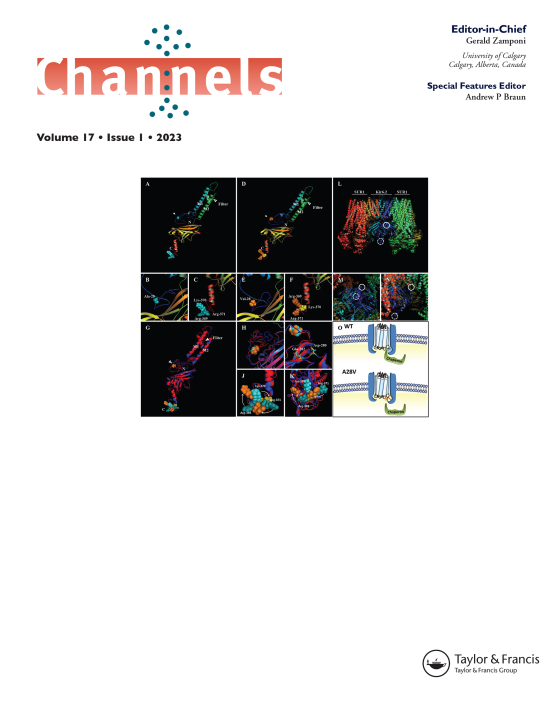Submit a Manuscript to the Journal
Channels
For an Article Collection on
L-Type Calcium Channels: Multiple Proteins Tune Function
Manuscript deadline
30 April 2024


Article collection guest advisor(s)
Jonathan Satin,
University of Kentucky
[email protected]
L-Type Calcium Channels: Multiple Proteins Tune Function
L-type calcium channels (LTCC) are active in a wide variety of excitable cell types. The LTCC is a heteromultimeric protein complex. Calcium is a critical regulator of membrane potential and vesicular fusion. In muscle cells, calcium regulates excitation-contraction and in neurons, calcium regulation can contribute to processes that feed into learning and memory, and sensory functions. LTCC’s are the key upstream regulators of calcium in diverse cell types. The LTCC serves as a major conduit for calcium in the regulation of cellular functions ranging from electrophysiology, to second messenger signalling, secretion, metabolic and gene regulation. Thus, mechanistic understanding of LTCC regulation enhances our understanding of healthy physiology and disease processes.
Mechanisms that regulate the LTCC impact a variety of cellular functions such as membrane potential, membrane-vesicle fusion, excitation-contraction coupling, protein activity secondary to Ca2+-binding, and protein trafficking/subcellular localization. The specific LTCC components that are essential for determining function are often context dependent. Moreover, the multitude of proteins identified as associated with the LTCC, many with overlapping interaction sites, raises the awareness that LTCC need not be homogeneous heteromultimeric complexes.
The goal of this article collection is to highlight advances in how multiple proteins resident in the LTCC shape calcium channel function, and to highlight mechanisms that regulate LTCC current by proteins. Early work focused on Cavb – CaV1.x along with the identification of pre-bound calmodulin to CaV1.x channels and the function of the a2d subunit. Numerous additional proteins have been identified as bona fide LTCC components since publication of formative studies of CaV1.2 subunits. For example, a-actinin and A-kinase anchoring proteins (AKAP) interact with and contribute to LTCC function. The AKAP is of course a scaffold for numerous additional proteins. In this vein, the precedent of secondary protein-protein interactions, the RGK family of pseudo-GTPases (Rad/Rem/Rem2/Kir/Gem) were discovered by yeast 2-hybrid screens to associate with CaVb. RGK proteins govern LTCC function in cardiomyocytes, neurons, and secretory cells. In the fight or flight response, phosphorylation of Rad confers modulation of LTCC. Removal of Rad in genetically modified mice confers a safe, stable gain-of-function in the myocardium. Cellular context and multiple protein interactions creates a rich, deep field of study that we hope to highlight in this collection.
Dr. Jonathan Satin is an ion channel biophysicist with early studies focused on heart development and the structure-function of voltage-gated sodium channels. His later work included characterization of T-type calcium channels and electrophysiology of human pluripotent stem cell derived cardiomyocytes. Dr. Satin's ongoing work focuses on Rad-regulation of L-type calcium channels and its impact on cardiac structure and function.
Disclosure Statement: Dr. Satin declares no conflict of interest regarding this work.
Benefits of publishing open access within Taylor & Francis
Global marketing and publicity, ensuring your research reaches the people you want it to.
Article Collections bring together the latest research on hot topics from influential researchers across the globe.
Rigorous peer review for every open access article.
Rapid online publication allowing you to share your work quickly.
Looking to Publish your Research?
Find out how to publish your research open access with Taylor & Francis Group.
Choose open accessSubmission Instructions
All manuscripts submitted to this Article Collection will undergo desk assessment and peer-review as part of our standard editorial process. Guest Advisors for this collection will not be involved in peer-reviewing manuscripts unless they are an existing member of the Editorial Board. Please review the journal Aims and Scope and author submission instructions prior to submitting a manuscript.